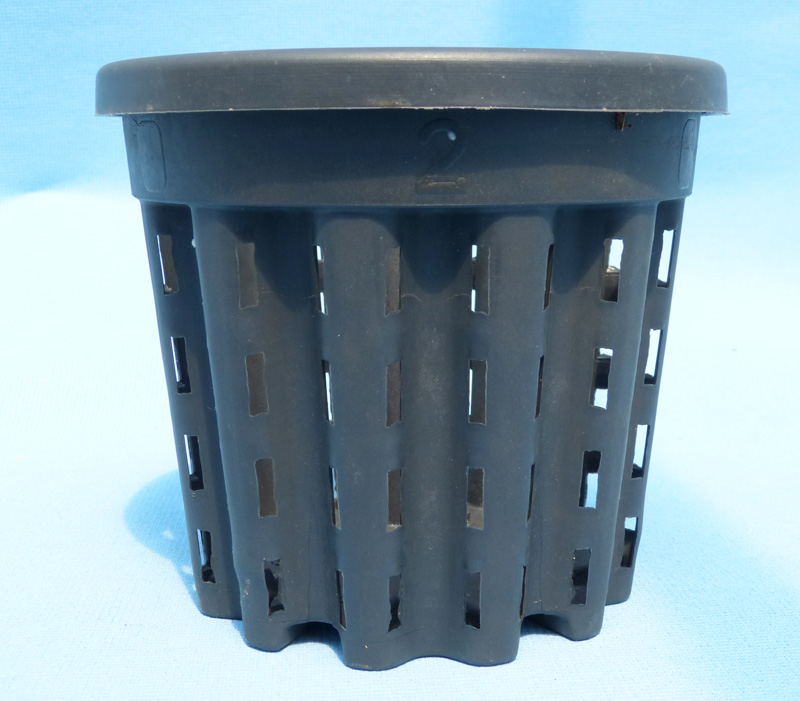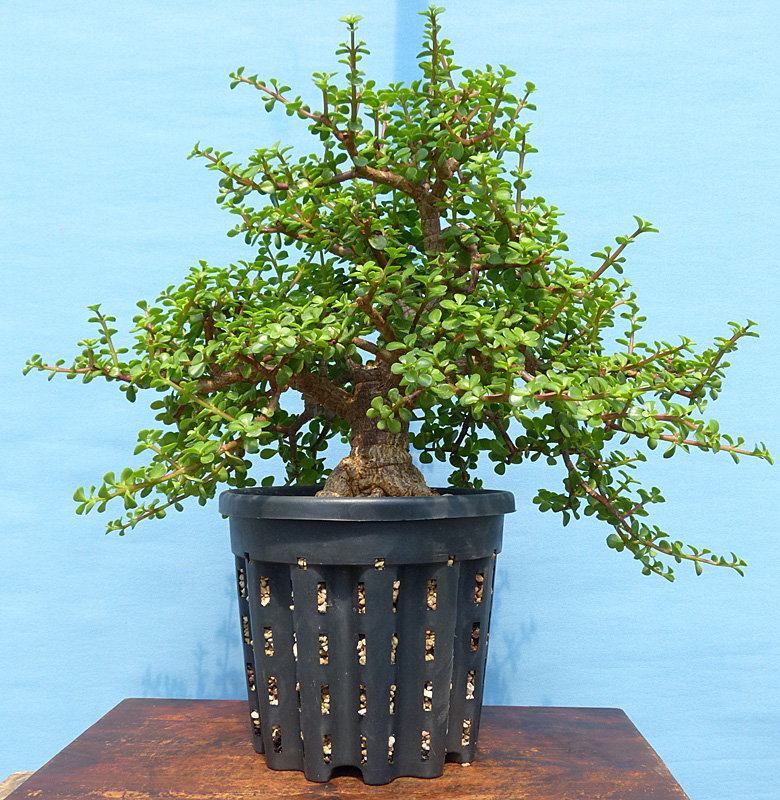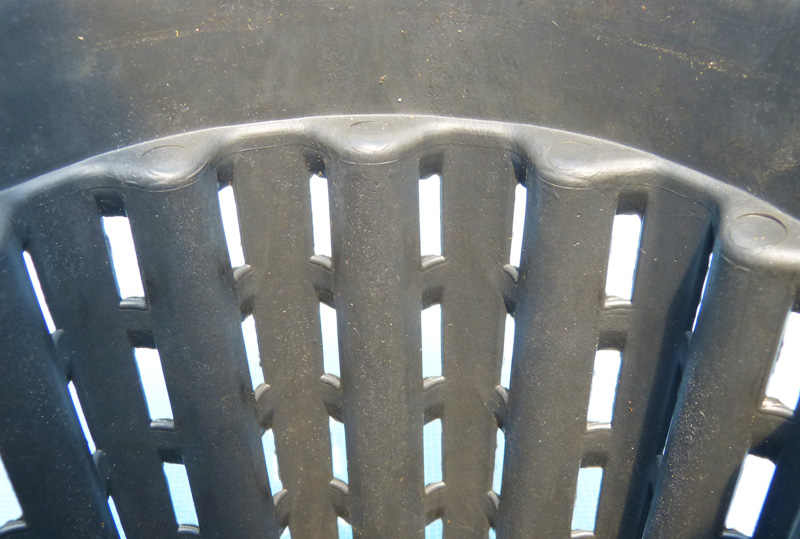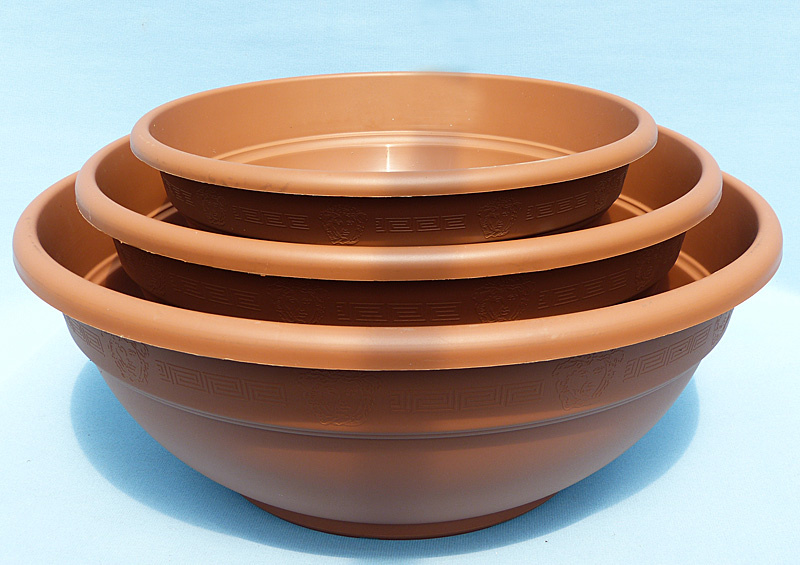Bonsai is all about growing. Growing is all about the perfect balance between sunlight, air, water and nutrients. I have been saying for a very long time now that bonsai is all about growing, if we had more gardeners and less artists the average bonsai hobbyist and his trees would be doing a LOT better. I spend a great deal of time every day talking with folk who are up to their Jacob’s in bewildering nonsense and half truths about how they cultivate and develop bonsai trees. So much of what has become ‘gospel’ in bonsai is based upon half truths borrowed from old fashioned horticulture and applied in the wrong way, at the wrong time to the wrong plants. I am currently (a year now) working on some articles that will open up the mysteries of bonsai horticulture and development but for now here is a good rule to remember…..Bonsai go into bonsai pots.
We sell a lot of raw material and yamadori for bonsai. It staggers and saddens me that the first question I am ever asked by folk that buy such materials from us is about how soon the tree can go into a bonsai pot. So, just to be clear, bonsai pots do not make bonsai trees. It’s a bit like living in the garage does not make you a car. The primary reason to use a bonsai pot is because it looks nice with a bonsai tree, a bit like a picture frame that sets of a nice picture. The secondary reason to use a bonsai pot is to slow the growth of a tree in order to help in the long term maturation and refinement of a bonsai tree. Raw material needs to be grown, and grown fast in order to develop root and branch structure, this process, especially with collected plants, is all about building vigour and strength which in turn means we can intervene in the plants progress in order to develop the shape we want. The harder a plant is growing the more often we can prune, wire and do all the other things we do to control the direction of growth. If a tree only grows an inch a year it stands to reason that we won’t be making any dramatic progress. However if that tree grows an inch a week we have a lot more options. I know that in some parts of the world astounding growth can be achieved regardless of the container used but here in the UK things are a little different and so we need to adopt special techniques in order to make the progress we need.
We have just received delivery of some new pots that are going to make life a whole lot easier for bonsai growers in less than ideal parts of the world……Meet the Ercole air pot.
It takes a great deal of time to create bonsai regardless of whether you are starting with seeds, cuttings, small plants or old yamadori. Ultimately the key to success is a good root system carefully balanced with just the right amount of foliage to fuel growth. The key to a powerful root system is dense fibrous fine feeder roots, and a lot of them. Sadly a bonsai pot is not a suitable container for the development of raw material into bonsai. A bonsai pot is designed to slow and restrict the growth of a tree thus easing the work required to keep the tree small. Always follow the rule, ‘bonsai go into bonsai pots’, never put raw material or undeveloped trees into bonsai pots, their future development will be SIGNIFICANTLY retarded and the process will take many times longer than in larger nursery pots. In all commercial bonsai nurseries across the world bonsai are developed, firstly in the ground, and then in nursery pots before being transferred into bonsai pots where just the final ramification and refinement is developed. We have found that developing trees into bonsai is best achieved with a relatively small diameter but deep pot, this will give the fastest growth rate. Accelerated growth is achieved by maximising the drainage of water through the root zone. Irrespective of the soil constituents used, drainage will always be better in deep soil rather than shallow soil, thus a deep pot will produce higher growth rates.
One of the primary draw-backs of conventional ‘flower’ pots is the tendency of plant roots to circle the pot. Roots naturally only grow down and forwards and after some time in a pot the roots can spiral around the inside often achieving several feet in length. The problem with this is that the white feeder part of the root gets progressively further and further from the tree, thus increasing transfer time of water and nutrients and reducing growth rates. In bonsai we prune the roots regularly at re-potting time which increases the density of fine feeder roots to counteract this effect. The problem with re-potting is the invasive nature of the procedure that can only be carried out at certain times of the year and requires a significant amount of time for the tree to restore it’s balance afterward, thus wasting valuable growing season activity. The efficient answer to this dilemma is what has become known as an ‘air pot’ which is an extremely simple but effective growth accelerating tool regardless of the plants you are looking to develop and grow. Roots naturally extend away from a plant in a search for water and nutrients, the little white end pushes it’s way through the soil relentlessly. If we can snip that tip off, the root will fork and divide behind the cut. This increases root density and the more little white root ends we can develop the stronger the plant will be. Using Ercole pots, once the growing tip of a root reaches the edge of the soil and emerges into the air it dries out and is effectively pruned and that is exactly how an air pot works.
From a bonsai development perspective these Ercole perforated pots are the ultimate growth enhancing tool. Light weight, space efficient, UV stabilised, cheap and infinitely reusable. Because of the shape and construction of the pot it is not necessary to go to the expense of using high quality free draining soil products. A finer more fibrous medium is still going to drain water efficiently. Therefore a relatively cheap growing medium can be used, bark, peat, coir and even regular garden compost will work really well. Because the pot is taking care of root pruning it is not necessary to keep re-potting and messing with the root system, plants can stay in these pots for several years and each year the growth rate will accelerate. At the time you are satisfied with the development of your tree the re-potting procedure is simple because the roots will not be encircling the rootball, it’s just like re-potting a well maintained bonsai tree.
If you are out collecting trees or rescuing skip rats, Ercole pots will offer dramatically increased survival rates and promote rapid re-growth. If you need to restore the vigour and health of tired old and neglected bonsai trees just two or three years in an Ercole pot with a good fertilising regimen will work wonders. Ercole pots are the perfect choice for developing starter trees as bonsai and given correct horticultural practice will produce growth rate similar to what might be achieved in the open ground.


LARGE NURSERY POTS FOR BONSAI
For a long time now we have been selling our popular little Bonsai Nursery Pots. These only go up to 14″ diameter but now I am pleased to say we have managed to source some larger sizes, Large Bonsai Nursery Pots, are available in 15″ 20″ and 24″ diameters. These are a common sight in Europe but much less so here in Blighty. These super tough pots will last for many years and offer a great balance of being fairly shallow whilst offering a good soil volume to promote strong growth. Plastic pots are super light weight, UV stabilised plastic, frost resistant and look a lot better than old chopped off barrels and hastily cobbled together wooden boxes made of pallets that weigh a ton and fall apart after a couple of years. Buy some to hold ‘in stock’ you never know when you are going to stumble across that skip rat that needs a big pot.
G.


Hi Graham,
It’s an idea I have tried myself using aquatic pots of various sizes. The only down side with all the holes all over the sides, is when using dry soil. Unfortunately it tends to leak through the holes, until enough roots have been made to stabilise the mixture. By the look of your pot, the concertina shape goes a long way in helping to stop this happening.